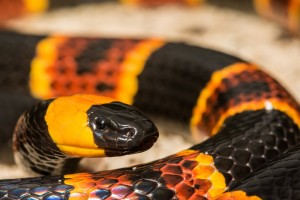 Burmese pythons get a lot of attention for living in the Everglades, even though they are an invasive species. However, there are 23 snake species in the Everglades and four are venomous. Snakes, although terrifying to many, help keep the ecosystem in balance. These snakes control the number of other snakes, invertebrates and rodents in the Park. Bird and alligators also prey on snakes.
Burmese pythons get a lot of attention for living in the Everglades, even though they are an invasive species. However, there are 23 snake species in the Everglades and four are venomous. Snakes, although terrifying to many, help keep the ecosystem in balance. These snakes control the number of other snakes, invertebrates and rodents in the Park. Bird and alligators also prey on snakes.
For this article, we wanted to detail the four venomous snakes that live in the Everglades, which include the Eastern coral snake, the Florida cottonmouth, the dusky pigmy rattlesnake, and the eastern diamondback rattlesnake.
Eastern Coral Snake – This snake has red, yellow, and black bands running down its body. It can usually be found in a wooded habitat and it is very elusive in nature, since it spends a lot of time under ground or beneath foliage. Coral snakes are not confrontational; they account for less than one percent of all bites that occur in North America each year; however, their bite is the most venomous of all the snakes on the continent. This snake’s bite isn’t overly painful, but can cause death within just a few hours.
Florida Cottonmouth – This snake is known as the “water moccasin.” It is a type of pit viper and it is the only semiaquatic viper species in the world. This snake can be found around shallow waters such as streams and marshes. These snakes can really swim. They are black, brown, tan or olive in color; the Florida cottonmouth also has a very thick body and can be up to six feet long. Its bite is painful and can lead to death.
Dusky Pigmy Rattlesnake—The dusky pigmy rattlesnake is a small snake between two to three feet. It can be found in both wet and dry areas. It is gray with black/brown dorsal spots across its back with white flecks on the stomach. This snake is aggressive and can be quick to bite with no warning. It has small fangs, so it only releases a small amount of venom with a bite. Its bite is rarely fatal, but can be more dangerous to a child or pet.
Eastern Diamondback Rattlesnake – This snake is the biggest of the venomous snakes in both mass and length; it can grow up to eight feet. This snake is also a great swimmer. It can be found by water or understand. The diamondback rattlesnake has dark diamonds across its body, each separated by a whiteish color. It is extremely venomous, but it is not aggressive. They rattling their tails to warn anyone who may be a
These poisonous snakes can look similar to many non-venomous snakes. So, how can you tell the difference between a venomous snake and a non-venomous snake?
- Most snakes with a triangular head are venomous.
- Snakes with lengthwise stripes are non-venomous.
Never approach or touch a snake if you’re unsure what kind of snake you are approaching. Even if you know your snakes, it’s better to leave wildlife alone. If you want snakes to stay away from you, it’s a good idea to make a lot of noise while walking, so the snakes are aware you’re around. Keep your hands out of potential snake hiding spots (logs, brush, leaves, rock piles), as well. Stick to the trails, because you’re less likely to run into a snake on a cleared path.
An airboat tour is a great way to stay safe in the Everglades without running the risk of encountering a snake. You may even get to see one slither by on land or water.
To check out the beautiful ecosystem that the snakes contribute to, Captain Mitch’s Airboat Tours will give you a glimpse of the Everglades like no other. To book an airboat ride, call 800-368-0065 or visit our Private Everglades Airboat Tours page. We are open seven days a week 8:30 a.m. to 5 p.m. If paying by cash, adults cost $40 (plus tax) and children 12 and under cost $20 (plus tax. If paying by credit card, adults cost $45 (plus tax) and children cost $25 (plus tax).
 Besides alligators and birds, there is art in the park! The Artist in Residence in Everglades (AIRIE) offers artists, writers, and composers the opportunity to live and work in the Park for a period of up to one month.
Besides alligators and birds, there is art in the park! The Artist in Residence in Everglades (AIRIE) offers artists, writers, and composers the opportunity to live and work in the Park for a period of up to one month.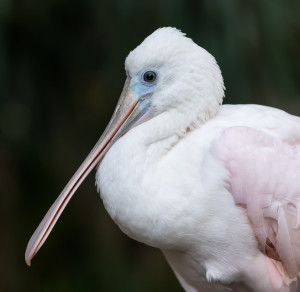 Researchers, scientists, government officials, park staff, and civilians have been trying to restore the Everglades in many different ways. One way is by helping out native species. We want native species to thrive in the Everglades, not disappear.
Researchers, scientists, government officials, park staff, and civilians have been trying to restore the Everglades in many different ways. One way is by helping out native species. We want native species to thrive in the Everglades, not disappear. The Everglades is a great place to take the whole family. There’s a lot of wonderful things to see and areas to explore, along with activities like airboat tours, biking, canoeing, shuttles, walking tour, and much more. Being an outdoor Park filled with wildlife, visitors must take precaution as anything can happen in terms of weather, flooding, restrictions, bugginess, etc.
The Everglades is a great place to take the whole family. There’s a lot of wonderful things to see and areas to explore, along with activities like airboat tours, biking, canoeing, shuttles, walking tour, and much more. Being an outdoor Park filled with wildlife, visitors must take precaution as anything can happen in terms of weather, flooding, restrictions, bugginess, etc.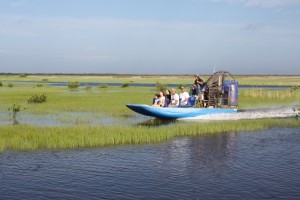 An airboat is an iconic site in the Everglades – being on one is an experience you’ll never forget. Airboats can glide along in shallow, marshy waters due to their flat-bottom design and their above-water propeller; they are also known as fan boats.
An airboat is an iconic site in the Everglades – being on one is an experience you’ll never forget. Airboats can glide along in shallow, marshy waters due to their flat-bottom design and their above-water propeller; they are also known as fan boats.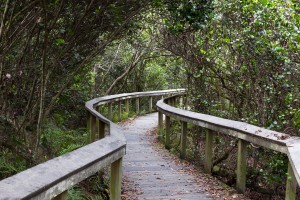 The Everglades is a magical place to explore, but being that it’s the outdoors, it’s a good idea to stick to paths and trails. The Everglades National Park allows visitors to explore the area with many hiking and bike trails winding throughout the wetlands. People can also canoe, boat, and kayak through the Everglades’ waterways.
The Everglades is a magical place to explore, but being that it’s the outdoors, it’s a good idea to stick to paths and trails. The Everglades National Park allows visitors to explore the area with many hiking and bike trails winding throughout the wetlands. People can also canoe, boat, and kayak through the Everglades’ waterways.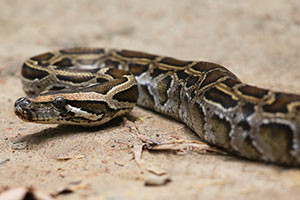 By now, you likely know that the Burmese Python is an invasive species to the Everglades, causing a lot of destruction. You’ve probably seen several articles of python hunters catching huge pythons and removing them from the Everglades, so they won’t breed or kill any more native wildlife. By reducing the number of pythons in the Everglades, hunters are helping bring a balance back to the ecosystem to the Everglades.
By now, you likely know that the Burmese Python is an invasive species to the Everglades, causing a lot of destruction. You’ve probably seen several articles of python hunters catching huge pythons and removing them from the Everglades, so they won’t breed or kill any more native wildlife. By reducing the number of pythons in the Everglades, hunters are helping bring a balance back to the ecosystem to the Everglades.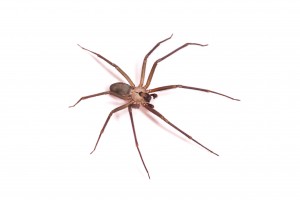 What is creepy and crawly, has 8 legs and scares a lot of people? Spiders! For the most part, people either love or hate spiders. Spider love the Everglades. In fact, there are 20,000 spiders per acre of land in the Everglades… and the Everglades is 1.5 million acres of wetlands, so that’s A LOT of spiders. The spiders enjoy the warm climate. Some are easy to spot while other spiders are barely visible to the naked eye.
What is creepy and crawly, has 8 legs and scares a lot of people? Spiders! For the most part, people either love or hate spiders. Spider love the Everglades. In fact, there are 20,000 spiders per acre of land in the Everglades… and the Everglades is 1.5 million acres of wetlands, so that’s A LOT of spiders. The spiders enjoy the warm climate. Some are easy to spot while other spiders are barely visible to the naked eye.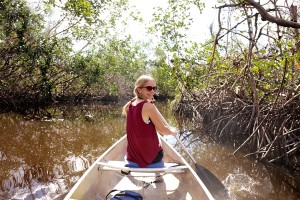 Do you like being active? Do you like canoeing and kayaking? Or, you want to try? The Everglades is a perfect place to venture out! You can paddle on through freshwater marsh, mangrove forests, and Florida Bay.
Do you like being active? Do you like canoeing and kayaking? Or, you want to try? The Everglades is a perfect place to venture out! You can paddle on through freshwater marsh, mangrove forests, and Florida Bay.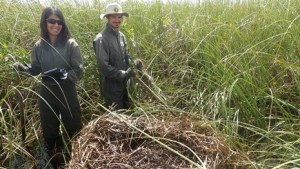 The Everglades is a National Park. It is home to thousands of plants, flowers, birds, mammals, reptiles, amphibians, insects, and more. The area provides drinking water for much of south Florida. There are species that live in the Everglades that live nowhere else in the world. It’s beautiful and there’s a lot to learn in this expansive Park. However, as years have gone by, the Everglades has shrunk in size. The area has become threatened due to human development and invasive species.
The Everglades is a National Park. It is home to thousands of plants, flowers, birds, mammals, reptiles, amphibians, insects, and more. The area provides drinking water for much of south Florida. There are species that live in the Everglades that live nowhere else in the world. It’s beautiful and there’s a lot to learn in this expansive Park. However, as years have gone by, the Everglades has shrunk in size. The area has become threatened due to human development and invasive species.





